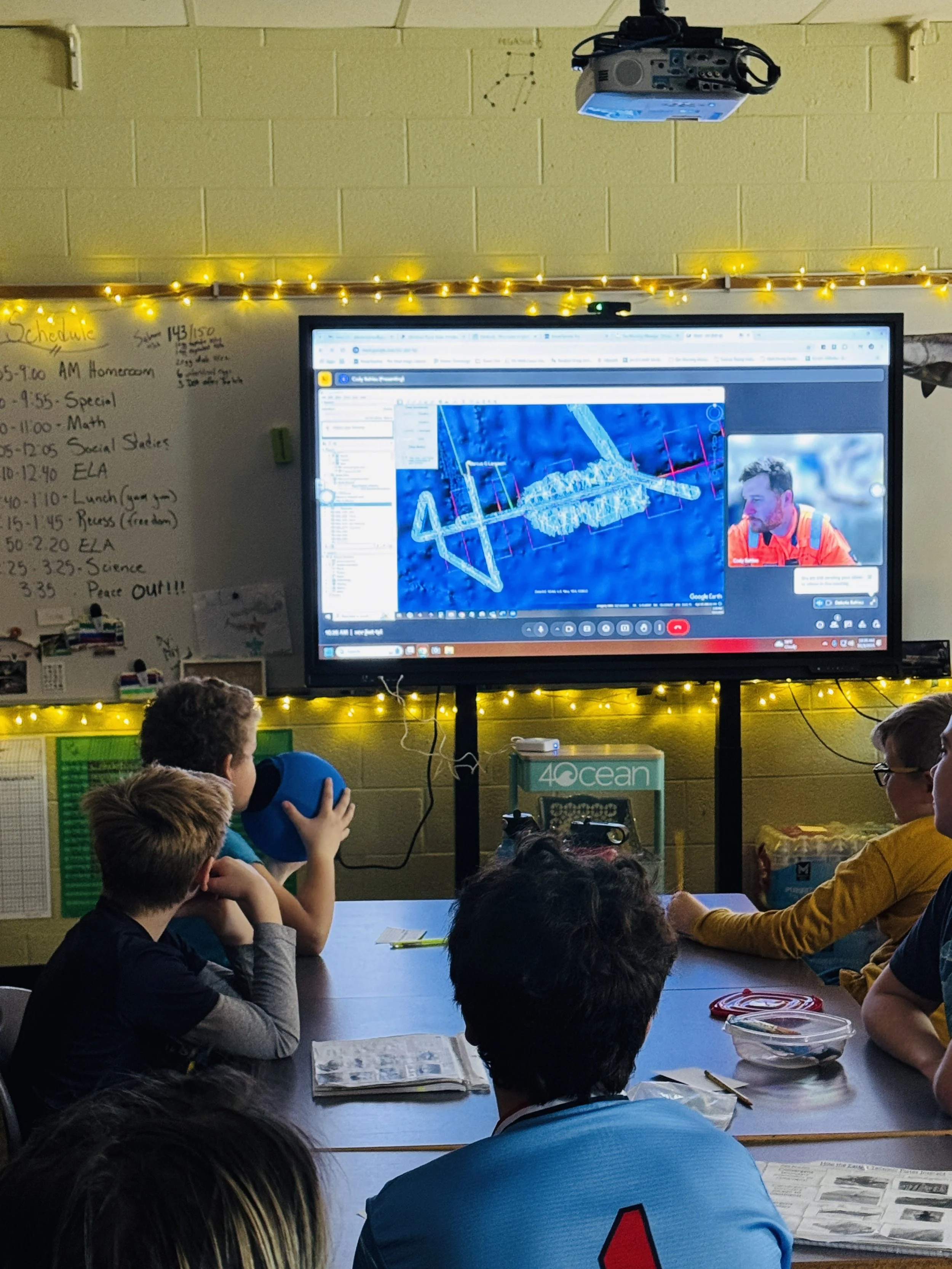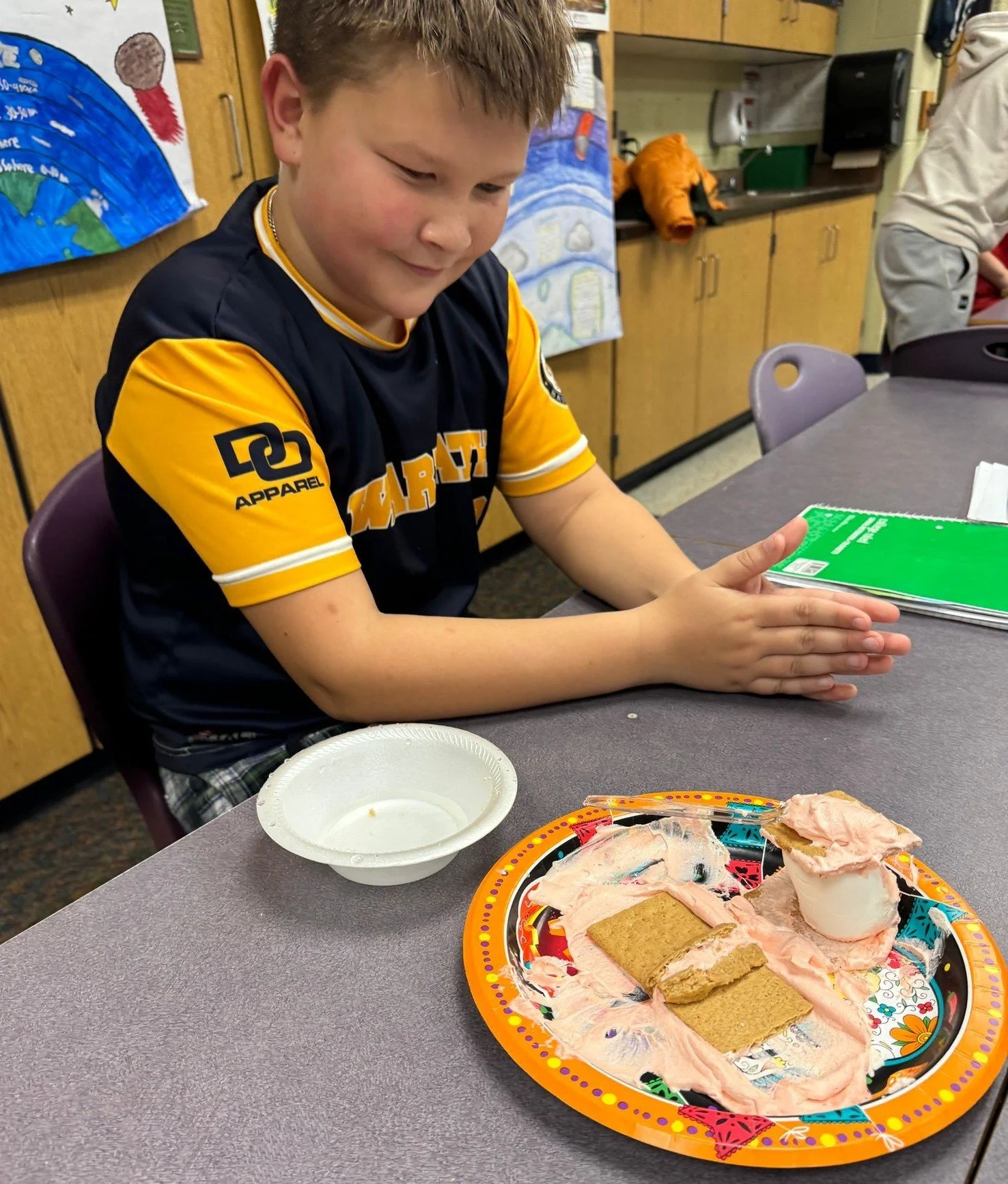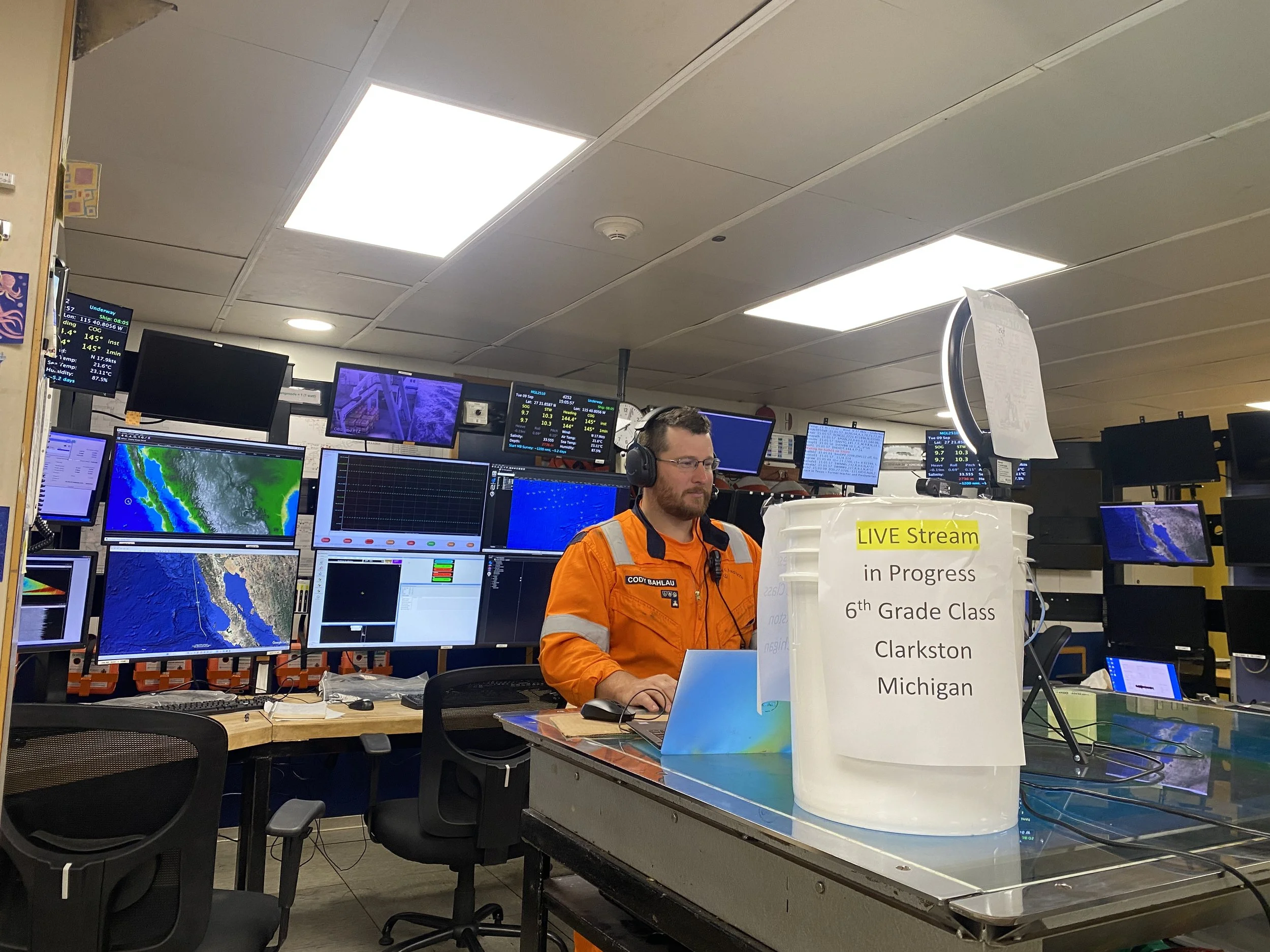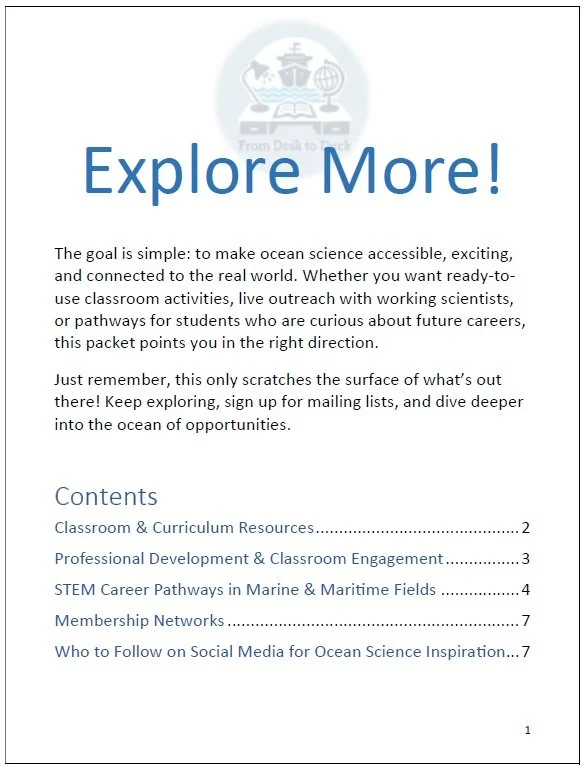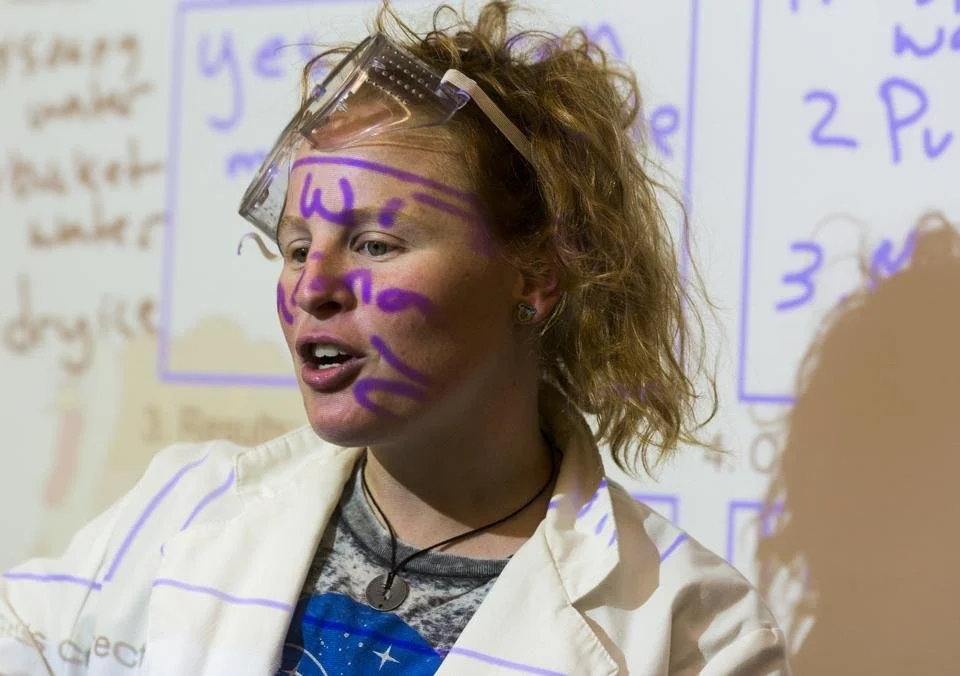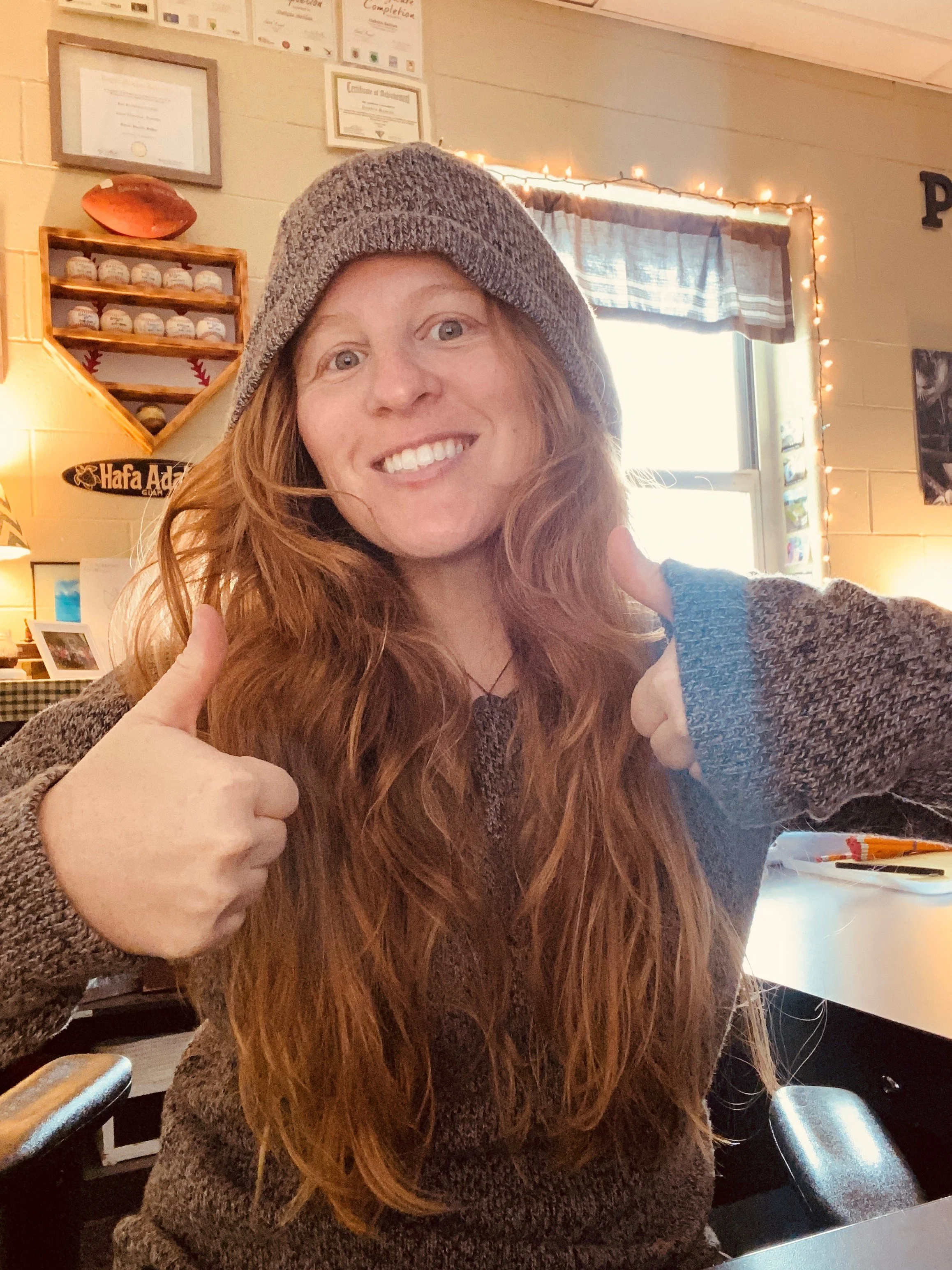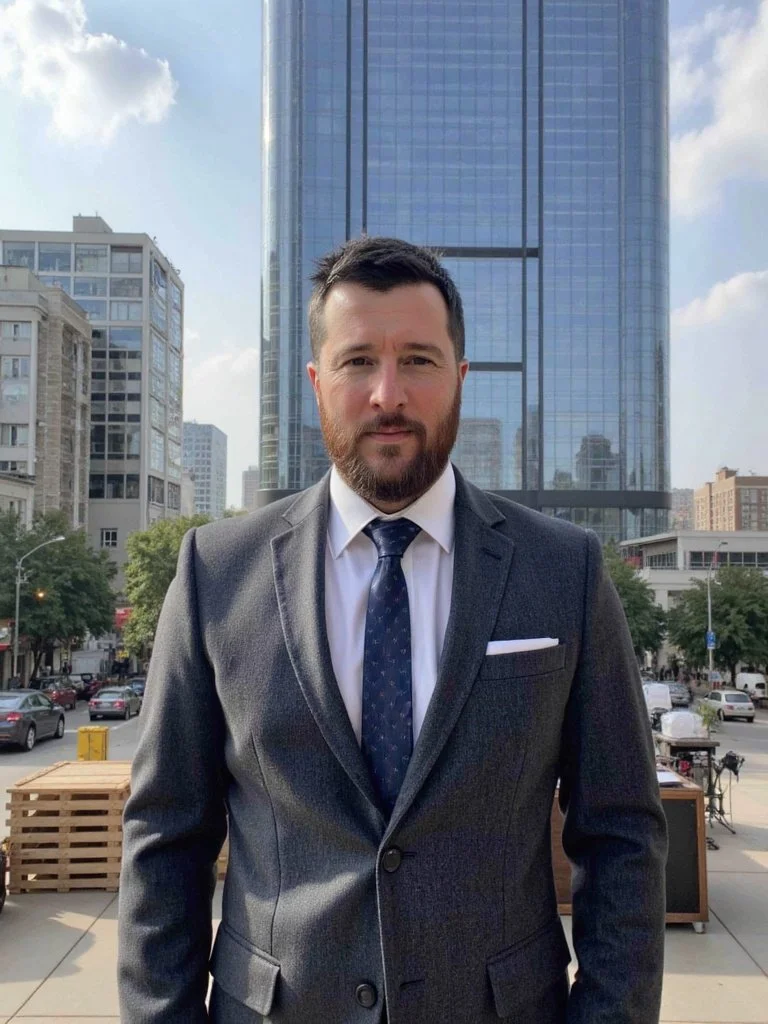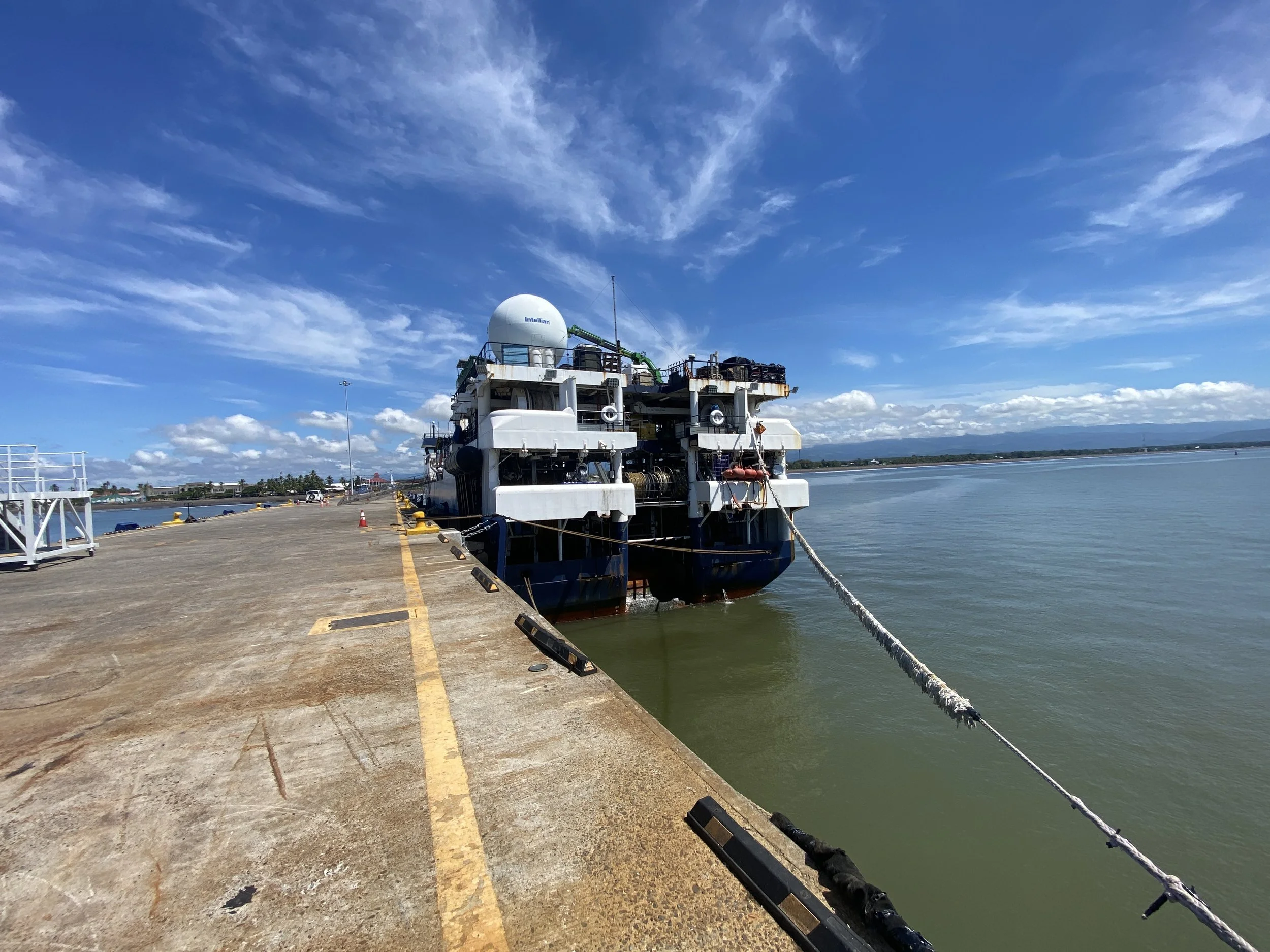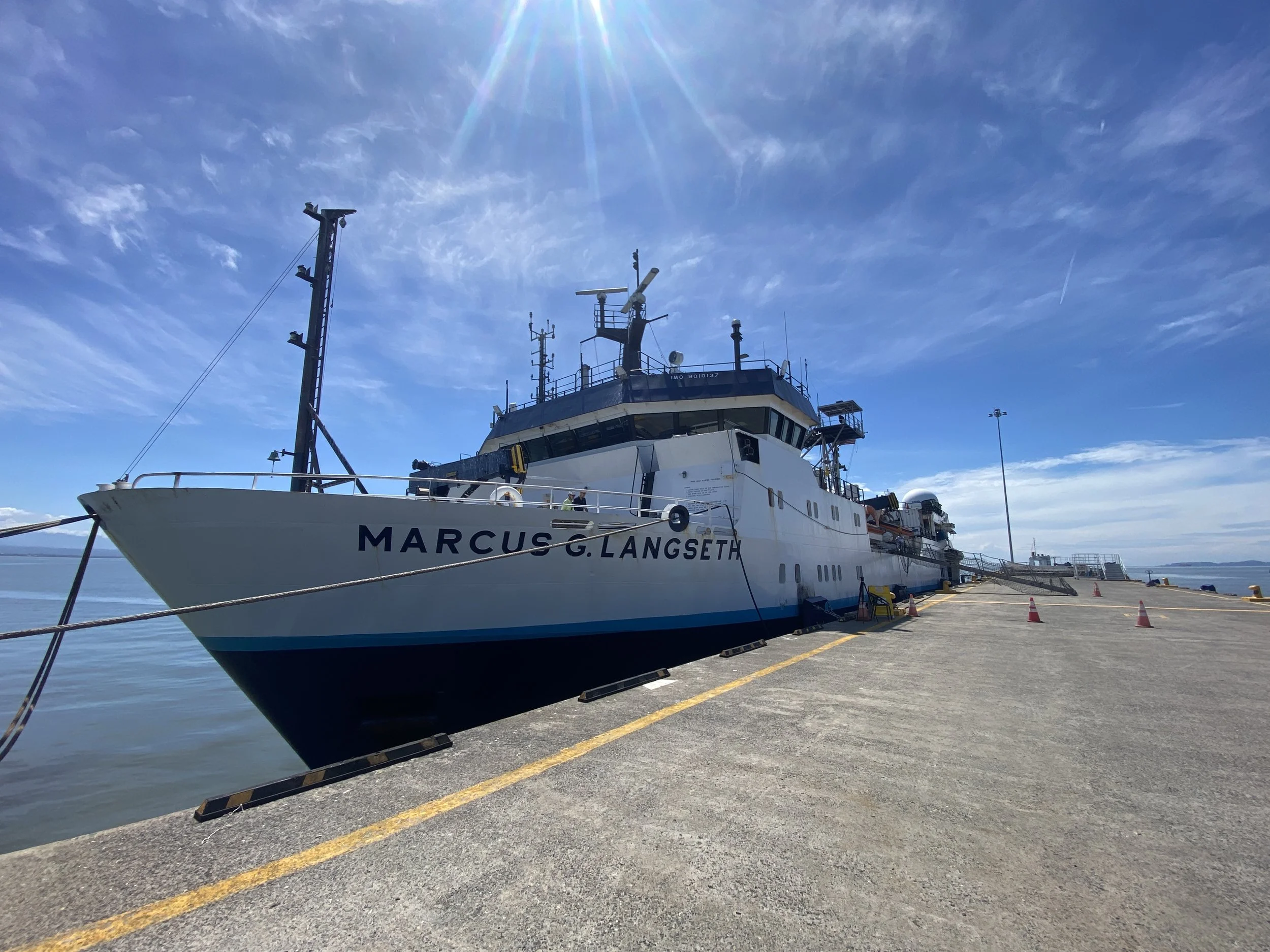
From classroom desks to ship decks, connecting education, exploration, and adventure.
Desk to Deck
Desk to Deck connects classrooms with life aboard a global ocean research vessel. Through live calls, videos, and real-time storytelling, students experience ocean science in action and see how teamwork, technology, and adventure drive discovery at sea.
Led by Chief Science Officer Cody Bahlau and educator Dakota Bahlau, the program bridges exploration and education, bringing the excitement of field science directly to students around the world.
Each live session takes students on a real-time adventure aboard Columbia University’s research vessel Marcus G. Langseth. Participants explore how scientists study plate tectonics, earthquakes, and ocean mapping, and gain a behind-the-scenes look at the instruments, teamwork, and problem-solving that make ocean exploration possible.
Students are encouraged to ask questions and interact directly with the crew, turning each call into a personalized voyage of discovery. The result is an unforgettable experience that connects classroom learning with the real world of science, technology, and exploration.
Desk to Deck is open to all grade levels, from Young 5s to university. Whether you’re introducing ocean concepts for the first time or connecting advanced coursework to real-world research, each session is tailored to the age, interests, and curriculum of your students.
How It Works
1. Connect
Teachers reach out through the contact form below to request a session. Cody will coordinate directly with you to find a time that fits both your class schedule and the ship’s research operations.
2. Go Live
When the R/V Marcus G. Langseth is at sea, Cody connects with your classroom using StreamYard, a simple one-click video platform. Students join the livestream, ask questions in real time, and experience life aboard a working research vessel.
3. Explore Together
Each session is customized for your students, covering topics like plate tectonics, ocean mapping, and careers in STEM. Recordings are shared afterward so classes can revisit their voyage and continue exploring.
Ready to bring your students aboard? Reach out below to plan your classroom’s next voyage.
What Our Partner Teachers Say
“WE LOVED IT! It was fantastic! You did a wonderful job of keeping their attention (not easy to do!) and you talked to them at the perfect level. Also, you made everyone who asked a question feel valued, even though several asked variations of the same question! Your connections to our weather unit were spot on, and I could see the students' faces light up each time you said something related. The multiple-choice questions were very age-appropriate and effective. The students were talking about this all day. It was so fun to listen to them talk about all the things you told them, and trying to say the "big words." I was impressed with how much they retained, and I think a few might actually be inspired.
Thank you so much for adapting for young learners. So often, cool experiences like this are above their level. I am a firm believer that young learners can learn big things, and it is never too early to expose them and inspire them. You and this program are a perfect example.
Thank you so much for this project and your time. It is very much appreciated.”
“Thank you so much for being able to take some time out of your day and call us. 3 things i learned is that you guys call your cafeteria a “mess room” instead of a cafeteria. I also learned how you guys take your OBS out of the water and into the water. Also your drills are about like a fire or a medical emergency. Thank you so much. I appreciate talking to you and I hope you have a good rest of your day!!.”
What Our Students say
“Thank you for your time and teaching us about a lot of stuff you know. like mph is in nots. That it takes you guys 16 hours to go through the panama canal. You guys take the obs out of the water by burning the rope that holds the anchor and then the obs floats up. Thank you so much for all of the stuff you taught us.”
“Thank you for presenting to our class. It was a pleasure learning about your job. It was fun being able to understand and see what you're doing in a day, it was also fun being able to learn where you've been and what you've done.”
Live from the Deck
Exploring the Ocean for the First Time
Even the youngest learners can connect with real science at sea. From curious five-year-olds to future scientists, Desk to Deck shows that exploration begins with curiosity and grows with experience.
Science Meets Storytelling
From waves and weather to ships and seafloor maps, students discover how ocean science connects to their everyday learning through real stories from life aboard the R/V Marcus G. Langseth.
From Desk to Deck—Live!
Each session connects classrooms directly with the crew and scientists at sea. Students—from early elementary to university—see real research in action and learn how teamwork, technology, and adventure drive discovery.
Explore with us
01
Virtual Expeditions
Live sessions from the deck of a global research vessel that bring ocean exploration into the classroom. Students can ask questions in real time and see how science happens at sea.
02
Classroom Connections
Supporting materials, short clips, and teacher resources that extend the experience beyond the call. Designed to spark curiosity and help students explore ocean science at their own pace.
03
Partnerships in Discovery
Collaborations with educators, museums, and youth organizations to promote STEM learning and ocean literacy worldwide.
Schedule a Live Stream
Desk to Deck sessions are scheduled around active research expeditions aboard the R/V Marcus G. Langseth. Because operations and sea time vary, live calls are offered only when the vessel schedule and mission permit.
To request a session, reach out to Cody using the contact form below. Together, you’ll coordinate a time that works best for your class and aligns with ship operations. Each session is customized to fit your students’ age group, curriculum, and interests, bringing authentic ocean exploration straight to your classroom.
Your Questions, Answered
What ages of students do you talk to?
All ages, from Young 5s to university. Each session is customized to fit the students’ grade level, interests, and curriculum.
What happens during a Desk to Deck session?
Each session connects your classroom live to the research vessel Marcus G. Langseth, where students meet the crew, see real science in action, and ask questions about life and discovery at sea.
How long are the sessions?
Most sessions run about 30 minutes, including time for Q&A. We can adjust based on class schedules and age group.
Can multiple classes or schools join the same session?
Yes. Multiple classrooms can join the same live stream. Shared sessions are a great way for students to collaborate, compare questions, and see how science connects learners from around the world.
What kind of technology do I need?
A computer with internet access and a webcam or projector is perfect. We use simple video platforms so joining is as easy as clicking a link.
Is there a cost to participate?
No. Desk to Deck is an educational outreach program designed to make ocean science accessible to all classrooms.
How do I schedule a session?
Teachers can reach out through the contact form on this site. We’ll work with you to find a date and time that fits your class schedule and the ship’s operations.
What topics do you cover?
Topics range from ocean exploration and marine technology to teamwork, data collection, and careers in STEM. Each talk is adapted to fit grade level and classroom focus.
Can students ask questions live?
Absolutely! That’s the best part. Students are encouraged to ask about the ship, the science, and what it’s like to live and work at sea.
The Crew Behind Desk to Deck
The idea for the program developed naturally. During classroom visits to Dakota’s school, Cody recognized an opportunity to bring his work at sea into the classroom in a more immediate and interactive way. Inspired in part by outreach models like Exploring by the Seat of Your Pants and National Geographic’s Explorer Classroom, the pair created a livestream-based program tailored specifically for one-on-one engagement with Dakota’s students. The goal was to address a common gap in science education: limited exposure to real-world STEM professionals and hands-on field research, especially in ocean exploration. Together, they aimed to boost STEM visibility, spark curiosity, and provide real-world context to Earth science and environmental systems. After a successful launch in Dakota’s class (Image 1), they expanded the program to additional classrooms.
-
Co-FounderDakota Bahlau is a fifth-grade science and math teacher at Grass Lake Elementary in Michigan, where she blends exploration, conservation, and community engagement into everyday learning. Drawing on global field experiences in Belize, Kenya, and Borneo through Project Dragonfly, she encourages students to see science as an active, hands-on process of discovery. Her approach emphasizes curiosity, connection, and a sense of stewardship for the natural world.
A passionate advocate for experiential education, Dakota leads her school’s international travel club, co-chairs the district’s Veterans Day program, and co-founded the Desk to Deck outreach initiative with her brother, Chief Science Officer Cody Bahlau. She has been recognized as the 2024 Michigan Elementary Science Teacher of the Year, 2025 American Legion Teacher of the Year, and a Top Ten Teacher by Jackson Magazine for her dedication to inspiring young learners through creativity, service, and global awareness.
-
Co-FounderCody Bahlau serves as Chief Science Officer aboard Columbia University’s global research vessel R/V Marcus G. Langseth, where he has participated in more than thirty oceanographic expeditions around the world. His work supports geophysical research on everything from tectonic processes to deep-sea mapping, and his experience spans leadership roles in expedition planning, offshore operations, and scientific coordination.
A passionate advocate for science communication, Cody co-created Desk to Deck with his sister, educator Dakota Bahlau, to connect classrooms with life and discovery at sea. He is a Member of The Explorers Club, the American Geophysical Union, and the Society of Exploration Geophysicists, and continues to promote curiosity-driven learning through talks, outreach programs, and global expeditions.
Ready to Come Aboard and Start the Voyage!
Have a question or want to connect your classroom with life at sea? Drop us a message and we’ll help you chart the course. Whether you’re an educator, student, or curious explorer, we’d love to welcome you aboard.

